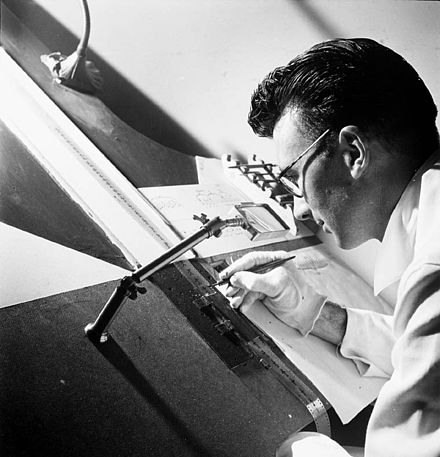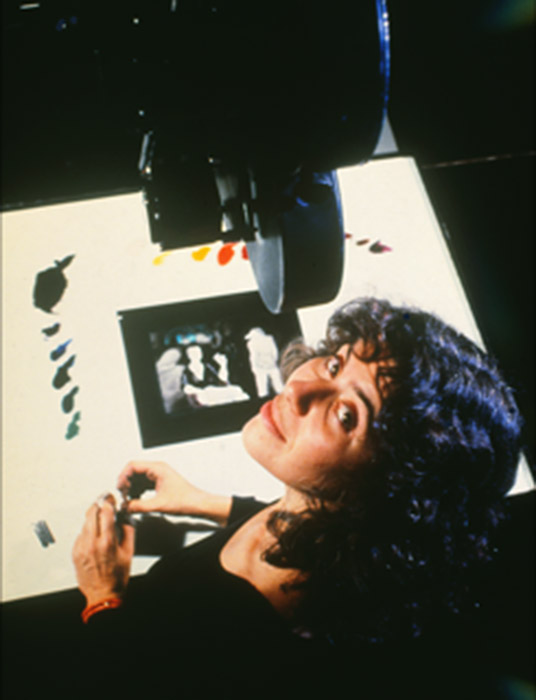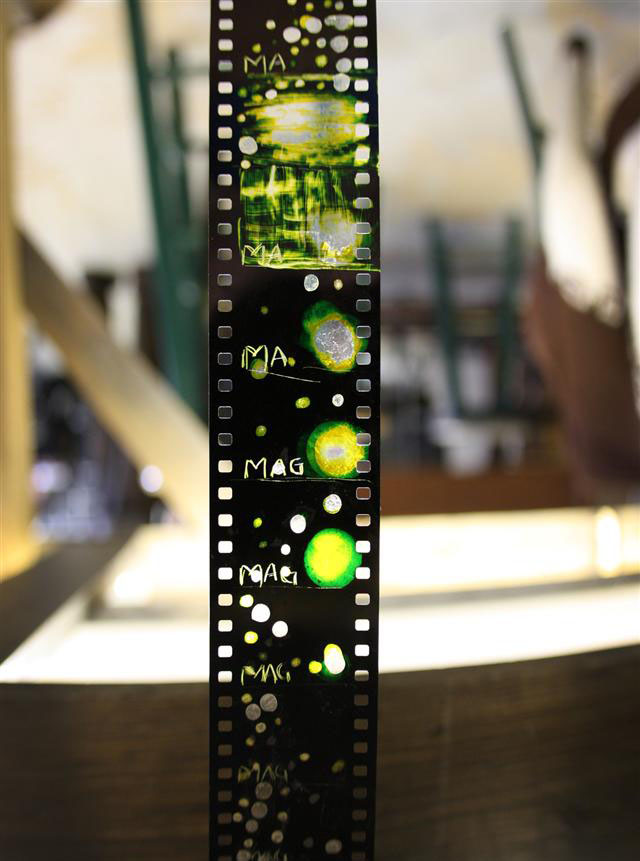The Relevance of Drawn-On-Film Animation Today
In the ever-evolving world of animation, various techniques have come and gone, leaving their unique imprint on the industry. Among these is drawn-on-film animation, a method that stands out for its distinct approach and artistic expression.
Originating in the early 20th century, this technique has witnessed the transformation of the animation landscape from analog to digital. But in an era dominated by computer-generated imagery, one might wonder, is drawn-on-film animation still being used?

Cover GIF via Wikipedia
This blog delves into the history, current status, and prospects of this intriguing animation style, unraveling its significance in the modern animation realm and for aspiring animators.
What is Drawn-On-Film Animation?
Drawn-on-film animation is an animation technique where animators create images directly onto film strips. Unlike traditional animation, which involves drawing on paper and then photographing each frame, this method involves etching, painting, or otherwise manipulating the film strip itself.
This hands-on approach allows for a high degree of creativity and experimentation, resulting in animations that are distinctly raw and visually striking.
The technique capitalizes on the unique properties of the film medium. Artists can scratch, ink, or paint directly onto the celluloid, or even use materials like sand or fabric to create textures. Each frame of the film is a canvas, with the artist’s direct touch creating movement and narrative as the film runs through a projector.

GIF by ᵗʳᵃˢᴴ ᶜᵃᵗˢ via GIPHY
This process yields a visual experience that digital animation struggles to replicate, imbued with a tactile quality and an organic, often surreal, aesthetic.
The appeal of drawn-on-film animation lies in its directness and the intimate connection between the artist and the medium. Every mark on the film strip is a deliberate choice, contributing to an animation style that is both personal and expressive.
It's a technique that invites innovation, as each artist brings their unique style and materials to their work, making it a fascinating study in the diversity of artistic expression.
History of Drawn-On-Film Animation
The journey of drawn-on-film animation dates back to the early 20th century, marking its presence as one of the earliest forms of experimental animation.
Origins
This art form was pioneered by artists who sought to break free from traditional narrative cinema, exploring the film medium as a canvas for direct artistic expression.

Image via Wikipedia
The technique gained popularity among avant-garde artists, who embraced its potential for creating abstract and visually mesmerizing sequences.
Earliest Works
One of the earliest known examples of drawn-on-film animation was created by artist Len Lye in 1935 with his groundbreaking work "A Colour Box."
This animation was notable not just for its vibrant visual style, but also for the way it challenged and expanded the boundaries of what could be achieved with film.
Following Lye, other animators like Norman McLaren continued to explore and innovate within this genre. McLaren, in particular, was known for his inventive use of the technique, combining it with other methods to create films that were both visually and conceptually ahead of their time.
Video by Fandor via YouTube
Evolution
As the decades passed, drawn-on-film animation evolved in tandem with advancements in technology and changes in artistic trends.
While it never became a mainstream technique in the animation industry, it remained a beloved tool among experimental filmmakers and artists.
This form of animation allowed for a level of personal expression and artistic freedom that conventional animation techniques could not offer.
Throughout its history, drawn-on-film animation has been a testament to the creativity and ingenuity of animators. Despite the rise of digital animation, this technique has retained its charm, continuing to inspire and intrigue animators who are drawn to its unique aesthetic and the hands-on approach it requires.
 | Looking to Elevate Your Business Skills as an Animator? |
Unlock your potential with our FREE Masterclass Our free masterclass is the perfect opportunity to do just that. You'll learn what you need to take your animation business to the next level. | |
Current Relevance in the Animation Industry
In today's digital age, where computer-generated imagery (CGI) dominates the animation industry, drawn-on-film animation occupies a niche yet significant space.
Despite the prevalence of digital tools, drawn-on-film animation hasn’t disappeared. Instead, it has found a new life in experimental and artistic projects.
Contemporary animators and artists often turn to this method to create unique visual experiences that stand apart from the polished, uniform look of CGI.

GIF by Walt Disney Animation Studios via GIPHY
These works are usually showcased in art galleries, film festivals, and special screenings, celebrating the enduring legacy and ongoing innovation in this field.
Moreover, drawn-on-film animation is sometimes employed in commercial projects as a way to achieve a specific aesthetic or to pay homage to the history of animation.
Some modern animators blend traditional techniques like drawn-on-film with digital methods, creating hybrid works that are both nostalgic and forward-looking.
While drawn-on-film animation may not be at the forefront of the industry, it remains an important and influential part of the animation world.
Video by Eric Ruan via YouTube
Its continued use and appreciation underscore the diversity and richness of animation as an art form, offering a compelling contrast to the digital techniques that dominate the mainstream.
Exploring Notable Works and Artists in Drawn-On-Film Animation
The world of drawn-on-film animation has become a bit of a niche. However, it still boasts a rich tapestry of works and artists who have made significant contributions to this unique art form.
These creators and their projects not only demonstrate the enduring appeal of the technique but also push its boundaries, showcasing its versatility and capacity for innovation.
Steven Woloshen
One contemporary artist who has made a name in this field is Steven Woloshen. Known for his experimental and vibrant animations, Woloshen's work exemplifies the creative possibilities of drawn-on-film animation.
His films often feature a kaleidoscope of colors and patterns, achieved through meticulous hand-crafting techniques. Woloshen’s dedication to the art form has earned him international acclaim and inspired a new generation of animators.
Video by Skwigly Online Animation Magazine via YouTube
Jodie Mack
Another notable work in this genre is Jodie Mack's "The Grand Bizarre." This film is a mesmerizing exploration of pattern and rhythm, created through hand-painted and hand-drawn techniques on 16mm film.
Mack's work stands out for its dynamic energy and inventive use of the drawn-on-film method, pushing the boundaries of what can be achieved with this traditional technique.
Caroline Leaf

Image by Animateducated
The animations of Caroline Leaf also deserve mention. Her work in the 1970s and 1980s, particularly her short film "The Street," showcases the emotional depth and narrative potential of drawn-on-film animation.
Leaf's technique involved manipulating sand on glass, a method that lent a raw, fluid quality to her animations, making them both visually stunning and emotionally resonant.
Learning Drawn-On-Film Animation Today: Is It Worth It?
So, is it still worthwhile for aspiring animators to learn the technique of drawn-on-film animation? Let’s take a look at the unique benefits and challenges this traditional form of animation offers.
The Learning Curve and Resources
Drawn-on-film animation is a highly hands-on and tactile process, requiring a different skill set compared to digital animation. It demands patience, precision, and a willingness to experiment with physical media.
While the resources for learning this technique might not be as readily available as digital tools, numerous workshops, online tutorials, and specialized courses offer valuable insights into this art form.
For those passionate about exploring the roots of animation, these resources can provide a thorough understanding of the medium.
Video by Rachelle Beardall via YouTube
Practicality and Career Implications
In terms of career prospects, drawn-on-film animation may not offer as many opportunities as digital animation.
However, learning this technique can significantly broaden an animator's artistic range and understanding of motion and storytelling.
Animators with experience in traditional methods like drawn-on-film are often viewed as versatile and well-rounded, with a deep appreciation for the craft of animation. This can be an asset in a field that values creativity and a unique voice.
The Future of Drawn-On-Film Animation
Looking ahead, the future of drawn-on-film animation remains bright, especially within niche artistic circles and experimental spaces.

Image via Webneel.com
Its ability to offer a deeply personal and tactile experience ensures that it will continue to inspire and be explored by artists who value the intimacy and authenticity of physical animation.
As animation technology continues to evolve, the contrast between the organic feel of hand-drawn animations and the precision of digital techniques will only become more pronounced, highlighting the unique charm of this traditional method.
If you’re looking into traditional animation to improve your skillset as an animator to grow your business, we’ve got the solution. Our Animation Business Accelerator Program provides insights, resources, and a supportive community to help professionals navigate the evolving landscape.
If you’re an animator who’s looking to start your own studio or grow your career, check out our blog on How to Start an Animation Studio to kickstart your animation career today or give our free Masterclass a try first if you’re curious.


